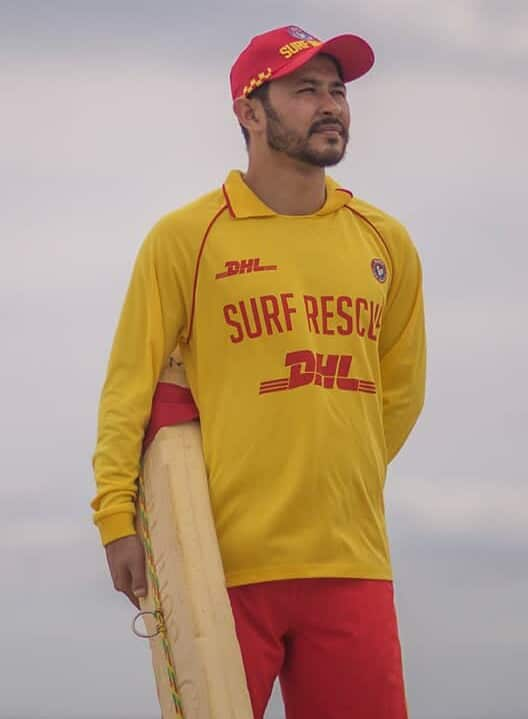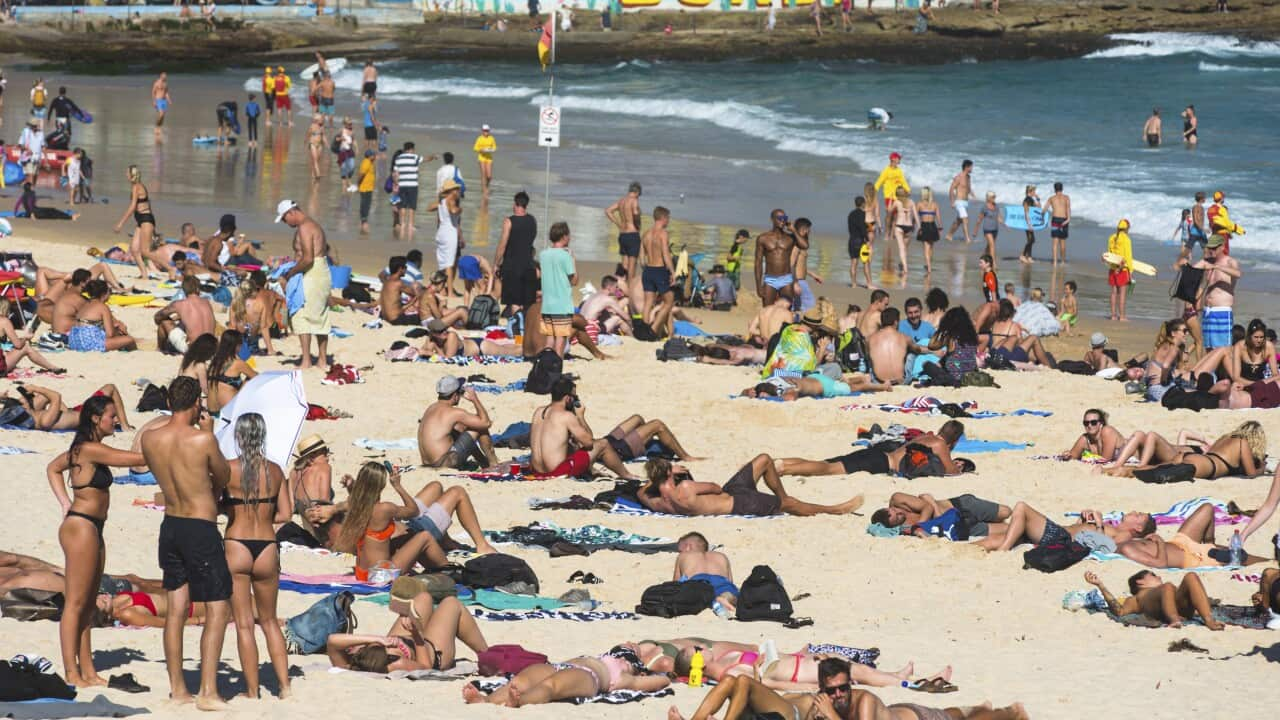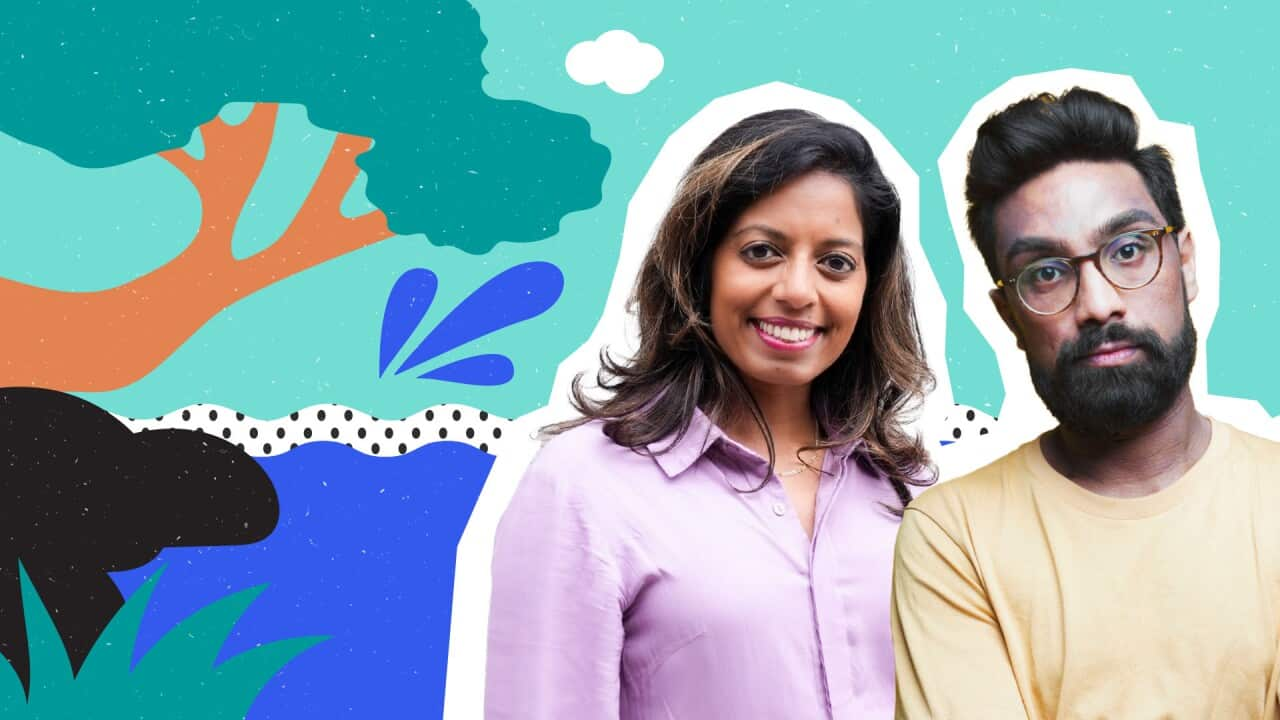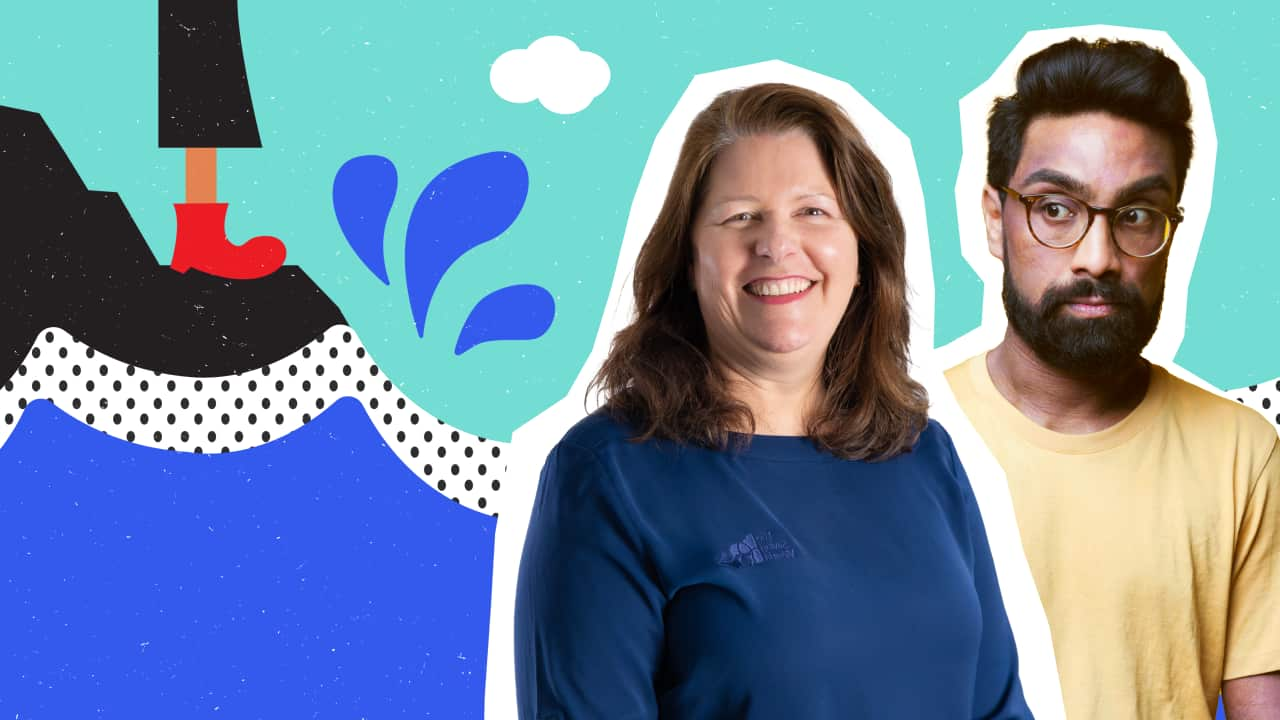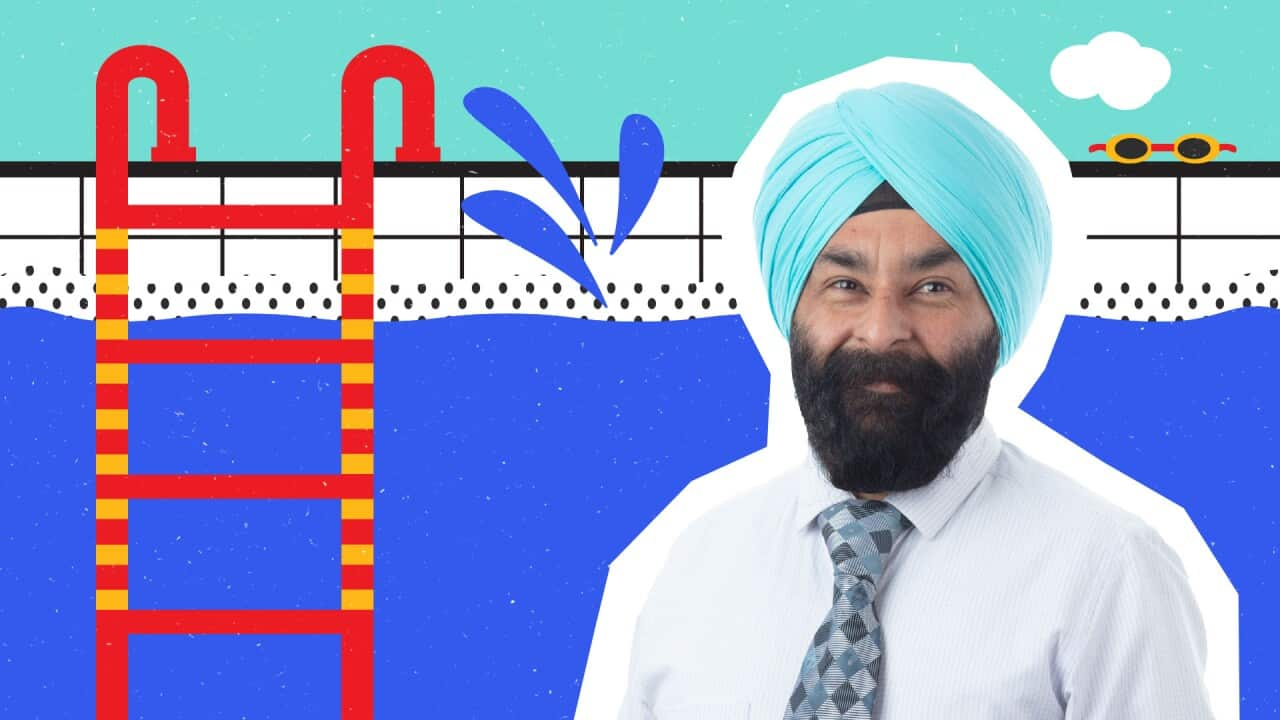Suren Jayemanne
We'd like to acknowledge the traditional owners of the land we're recording from. We pay our respects to the Wurundjeri Woi Wurrung people of the Kulin nation and their elders, past and present. We also acknowledge the traditional owners from all Aboriginal and Torres Strait Islander lands. You're
Sashi Perera
Hey, Suren, have you ever been scared in the water, like you knew something could go actually, really wrong?
Suren Jayemanne
Actually, yeah, I have. A few years ago in Europe, some friends and I went to, Malta. Lots of beautiful beaches there. And they're both quite, I would say, intrepid and adventurous swimmers. And we went to this one particular place where there was, like a lagoon. And then on the other side of the,
lagoon was like a cliff face and you could kind of climb up and dive into the open sea. At first the lagoon didn't look too intimidating and it didn't look too far even to swim across. And so as they were swimming across, I was like, yeah, I'll be able to do that. And, very quickly, as soon as I
lost confidence, I kind of felt like all of a sudden I was very aware of not being able to feel the sand bank under my feet and then starting to struggle. And I think I just said to my friend, I don't think I'll be able to make it the whole way. And then he kind of, he put me on his back. This is
how good a swimmer he is. And then swam across the, to the other side. And, and then I literally just sat on the rocks while they went and climbed up and dove off into the sea. And I, I was kind of like trapped there because I couldn't swim back to the shore. But also was no way that I was going to
join in the diving. So I just had a lot of probably about an hour while they were having fun to reflect on, on my life's choices. And I mean, it was beautiful. It was one of the most beautiful places to reflect on your choices. But I was, yeah, it was sort of like, oh, I, I should really learn to
swim properly. Sashi, this is kind of nuts. Like, I'm a fully grown adult. I can hold down a job, I've painted a house, I can change a tire, but I can't swim. I'm an adult man living in Australia and I can't swim. I have to do something about this. I'm Suren Jayamana. I'm a second generation Sri
Lankan Australian and I'm a comedian, writer and actor. But, I can't swim. I'm starting to realise just how much of Australia I'm, missing out on because of that.
Sashi Perera
And I'm Sashi Perera. I'm also a second generation Sri Lankan Australian and I'm a comedian and a writer. But I love the water. I love going to the beach with mates. I do laps at my local pool. I've even got my diving licence. And I hate the idea that Suren's missing out, out on all this fun. So I'm
taking him under my wing and we're going to go learn about Australia's water culture.
Suren Jayemanne
Wait, you're going to teach me to swim?
Sashi Perera
Okay, not exactly. I am a keen swimmer, but I'm no coach. I want to make sure you learn from the best, so I'm bringing in some experts to help.
Suren Jayemanne
This is Head Above Water. It's a podcast from SBS Audio. And if you're like me and you aren't comfortable around the water just yet, this is the show for you.
Sashi Perera
It's for anyone who wants to get more familiar with all the different water environments Australia has to offer. We'll visit a local pool. I know someone who's designed a swimming course specifically for new migrants,
Suren Jayemanne
Which will help if you're learning to swim as an adult like me, or if you've got kids who are learning to swim and And you want to support them. Hey, Sashi, do you reckon we can also jump on a boat too?
Sashi Perera
Yes, but only after we've learned about life jackets. I, also reckon you'll love rock fishing.
Suren Jayemanne
Oh, rock fishing. That sounds like the perfect mix of relaxation and exhilaration out there on the rocks throwing a line in.
Sashi Perera
It can be fun if you know how to read the waves crashing onto those rocks and if you have the right safety gear.
Suren Jayemanne
Wow, Sachi, this actually sounds so useful. You know what? I think I'm ready. Where should we start?
Sashi Perera
I think it makes the most sense to start at the beach with someone who can tell us how to spot a rip and what the red and yellow flags are for. He's one of 45,000 lifeguards patrolling Australia's beaches. But when he first arrived in Australia, he couldn't swim at all.
Ramzi Hussaini
I came to Australia in 2011 as a refugee asylum seeker. I came from Afghanistan. No knowledge about water, no swimming, nothing. I wanted to, merge myself into Australian culture and swimming and life saving was one of the very, very important factor in my life to help improve and help settle in
Australia because obviously surf life saving is one of the most Australian cultural thing, that you can think of. My name is Ramzi Hussaini. I've been working at Life Saving Victoria for over 10 years now, delivering water safety messages, water safety programmes to the well needed communities in
Victoria from the diverse background.
Suren Jayemanne
When you finally made it here to Melbourne, you're learning English and you go on an excursion with some of the folks from Life Saving Victoria. Where did they take you?
Ramzi Hussaini
First they came to the school and talked about water safety which was a bit dry, I wasn't into it as much. But when the opportunity was given to come down to the beach because the way I came I came sort of by boat and it was not a great experience. The fear of water was still there and when the
exposure of the sort of the school was given to to the local beach, that's when we sort of, I personally sort of realised that hey, water can not always be dangerous. It can be fun but you just need to sort of know or you need to be with professionals. Yeah. And the activities that we did on the day
was crystal clear water. Best day, you could have asked for. Felt like you were in Bahamas basically. So that's why it got my interest a bit more. So that's how I got into it and that's, that was the training day. The day that we were at the beach was the highlights. That's why I said look, I want
to do more of this. How could I do more? I wanted to be lifesaver but the problem was that I could not swim at that time.
Suren Jayemanne
There's obviously a big obstacle there. You didn't know how to swim.
Suren Jayemanne
what was, how did you go about that?
Ramzi Hussaini
After the programme, when the programme was finished I met my current manager. I said look, I'm m very interested to become a surf lifesaver but I don't know how to swim. But then the Life Saving Victoria helped out with the costing and everything because obviously being on my own at the age of sort
of 16, 17, so it helped me a lot financially as well. It took me about approximately one year to get the basic flotation and get the swimming strokes in a, in a sort of skill where I needed to be.
Suren Jayemanne
If people are down at the beach and they want to see someone like yourself or your colleague, what, what kind of, what are they looking out for?
Ramzi Hussaini
Lifesavers are on the beach and it is impossible to miss them because they wear bright red and yellow. That makes them stand out. Lifesavers are friendly, they are at the beach for your safety. If you have any Question any concerns. Talk to the lifesavers. They are volunteers. They work at the beach
because they want to be there, because they want to help the community, because they want to help make the community safer. Talk to them for anything. If you have any questions. We are there for your safety. When the lifesavers are on duty, they put red yellow flags in between the flag is the safest
place because that's where the lifesavers are constantly watching. And if you need any kind of help, we are seconds away from you. We can help you very, very quickly as opposed to if you are very far away from the flags. It could take us very long time to help you. If we do see you, we will
definitely help you. But staying between the flag is the best place to swim, to play and to do anything that you want at the beach. That's the safest place because lifesavers are very close to you.
Suren Jayemanne
I'm not super familiar with the beach myself, but my friend's planning to take me down to our local beach. You've mentioned the flags. Is there anything else I should know before I head down?
Ramzi Hussaini
Water safety starts at home. You need to prepare, prepare, prepare. Before you leave home, check the weather conditions. Because the weather could be very, very different to where you live to where you are going. Check the water condition. Strongly recommend downloading a ah, free app. It's called
beach safe app. You can download this from app Store, Play store. It's free. In the ah, beach safe app you can basically find details of the beach signage where you can find lifesavers. When can you find lifesavers? The weather, the swell, which makes a big difference to when you are going surfing.
Whether the swell is big enough for surfing, whether it is too big for surfing gives the danger rating like how dangerous the beach is. Obviously the more wavy, the more choppy, the more dangerous. So water safety starts at home. Prepare, pick up your sunscreen, make sure you are wearing appropriate
clothing. Check the weather, check the water conditions so you don't find yourself in an unfortunate situation where you are getting obviously in trouble. So prepare before you leave.
Suren Jayemanne
So one of the things I'm pretty worried about when it comes to the beach is rips. Like I don't actually even know what one is. I've just heard that they're dangerous. What should I do to learn to identify one?
Ramzi Hussaini
The beach safe app contains video. and again you can turn on the subtitles. There are different languages as well. Play the Beach Safe app video that sort of says identify the rip. It is for two minutes, and it can make big difference in the life and death situation, basically because,
unfortunately, they don't look the same. The rip currents, depending on the day, depending on the wind and the tides, it can move around. There could be many, rips at the same beach at the same time. So watch the video. It'll give you a very thorough knowledge of how to identify the rip.
Suren Jayemanne
Sashi, do you know how to identify a rip? I don't even know what I'm looking for.
Sashi Perera
There are a few indicators. Rips, are usually long, narrow strips of water that look different to the rest. First, the water is darker and looks calmer, and it's pulling water out to the open ocean away from the shore.
Suren Jayemanne
I've also heard people say you should swim sideways when you're in a rip. What does that mean?
Sashi Perera
What they mean is you need to swim parallel to the shore. As in, if you're facing the sand, turn sideways and swim out of the rip, not against it. That long strip of water is pulling you away from the shore, and it's too strong to swim against, but you can swim out of it. And then once you're back
in the normal water, it's easy to swim back to shore again.
Suren Jayemanne
Ah, well, that actually makes sense. still sounds a bit scary, though.
Sashi Perera
It can be. But take Ramzi's advice on this.
Ramzi Hussaini
Stay calm just in case. If you get in trouble, and this is, a lot of the time, it's the problem with the rip, if you are getting accidentally. If you are in the rip current and you're getting swept out towards the sea, the first thing you need to do is stay calm. The more you move, the more you
panic, the quicker you'll drown. The water pushes you towards the sea. It does not push you under. So all you need to do is stay calm. Try to get out of the rip as soon as you can. A lot of the time, if you can stand up, walk to the side, do not come against the rip. Do not try to come back the same
way. In other words, you can walk towards the waves because the waves will actually help you back, push you back towards the beach. If you can't, stand up again. I know it's the hardest thing to do. Just stay calm. Keep your nose and mouth out of the water, put one hand up and call for help.
Suren Jayemanne
Have you got any tips for someone who, you know, their children might still be learning to swim, but the kids really want to get down to the beach in the summer, what tips do you have for families who might be hitting the surface, supervision.
Ramzi Hussaini
If it is applied at the swimming pool, it is 200% applied at the beach. Just a, small blow towards the, offshore wind. Again, can cause a big trouble. If you are not supervising, have some sort of flotation device with you just in case. If someone gets in trouble, you can help them. And please, if
you don't know how to swim, do not jump in the water because again, that causes more trouble for someone who can help. Again, swimming lesson for children and for everyone in general is essential, particularly in Australia, because everything that we do is based around water, picnic, camping,
anywhere. It's the way of our living. and swimming lesson is integral part of our living now.
Suren Jayemanne
That's Ramzi Hussaini, the diversity and inclusion project coordinator at Life Saving Victoria.
Sashi Perera
Okay, Suren, this raises a few things for me. Can I tick them off one by one with you?
Suren Jayemanne
Let's do it.
Sashi Perera
Okay. Number one, appropriate clothing. This always stresses me out because I come from an original culture where you are fully clothed when you get into the ocean for modesty reasons, yeah. But now I now live in a culture where being in a bikini shows that you are a strong, independent woman who is
in charge. And I don't know where along those lines I'm supposed to be operating. And. And I don't know how much of that is being a woman or being a migrant. Do you also struggle with this as a man?
Suren Jayemanne
I feel like I am, both strong, independent and modest. And if that is one of the categories I'm also a man, so I think maybe it's less, But. But I'm also a man, so I think maybe it's less, slightly less of a pressure in. In the back of my mind. Although I will say everyone's real fit at
Sashi Perera
Everyone is so fit.
Sashi Perera
I always feel scrawny there.
Sashi Perera
I was on the beaches of Perth you know? I don't know what everyone does in winter, but I'm guessing it is secretly work out because everyone is so fit on those beaches.
Suren Jayemanne
They're all thinking about beach time.
Sashi Perera
Okay, I'm glad this is a shared issue. Okay, the second one is sunscreen. I don't think I knew until my late 20s that we're supposed to wear sunscreen.
Suren Jayemanne
Wait, what?
Sashi Perera
Yeah, Bob Marley apparently died of a melanoma under his toenail. And because we, you know, it takes Sri Lankan skin longer to burn, but once you do, you're also susceptible to skin cancers and things like that. Yeah. We're supposed to be getting checked and we're supposed to be wearing sunscreen.
There's also the whole thing about, like, we're not supposed to be in the sun at all. You know, like, as a Sri Lankan woman, it's like, you must stay fair so someone wants to marry you. That's a whole thing as well, which I'm not touching. In the next episode of Head Above Water, we're hitting the
pool. If you're spending time near any kind of waterway, you'll be safer and probably have more fun. If you're a confident swimmer. which,
Suren Jayemanne
Which you know, I'm not.
Sashi Perera
Not to worry. I know someone who can help. You'll meet Dr. Harpreet Khandra Singh, a Sikh community leader and academic who couldn't swim when he first came to Australia. But when he decided to take the plunge, he brought his whole gurdwara, or temple, along with him.
Dr Harpreet Singh Kandra
Every time I go to a, holiday and in Australia, where you have, I mean, thousands of beaches, I think my holiday is incomplete because I am scared to get into the water. And that is what I have been packaging and selling to the community.
Suren Jayemanne
Head Above Water is a miniseries of the SBS Australia Explained podcast. Follow the Australia Explained podcast for more valuable information and tips about settling into your new life in Australia.
Sashi Perera
And if you have any questions or topic ideas, send us an email. The address is australiaexplained@sbs.com.au
